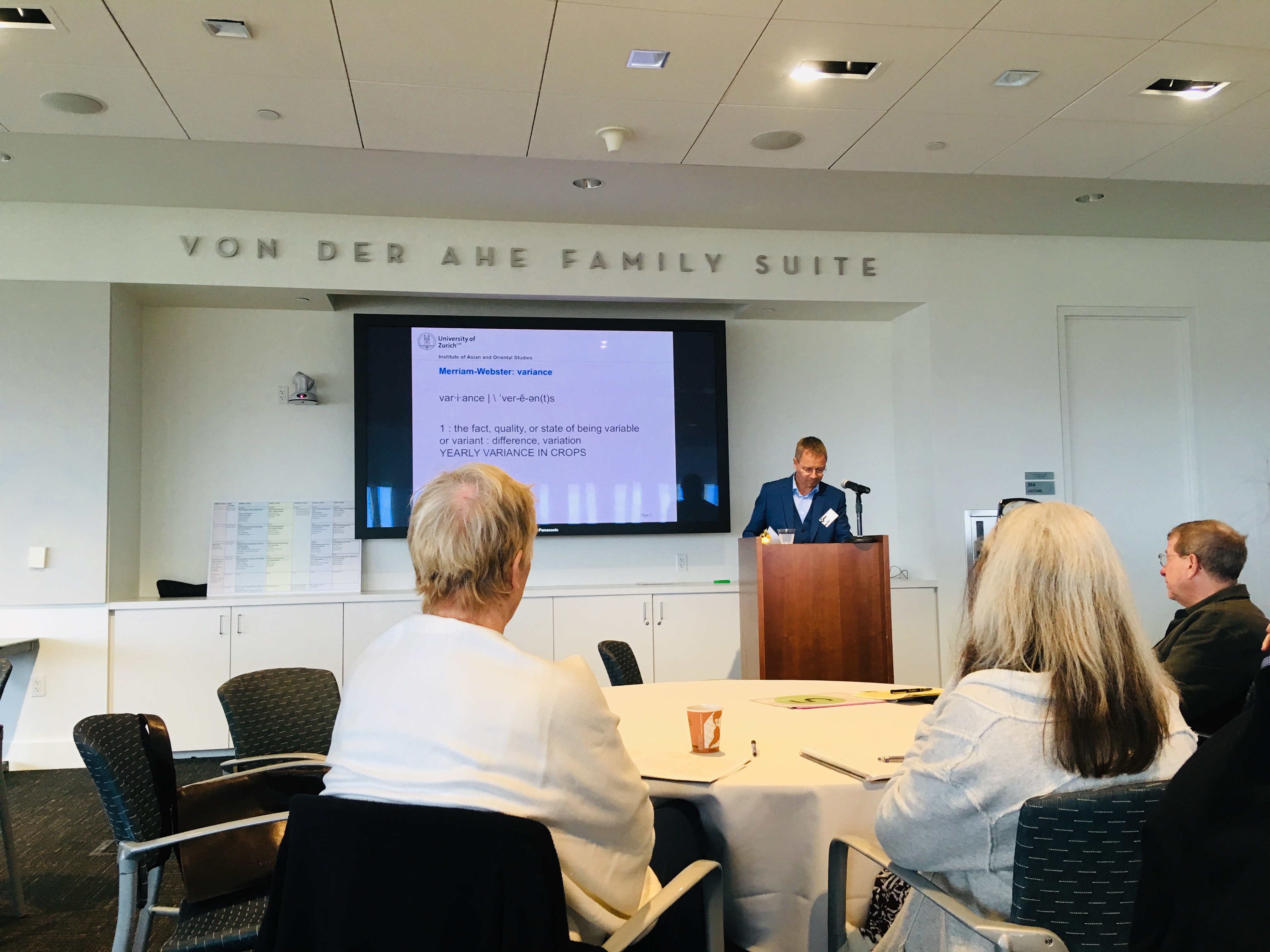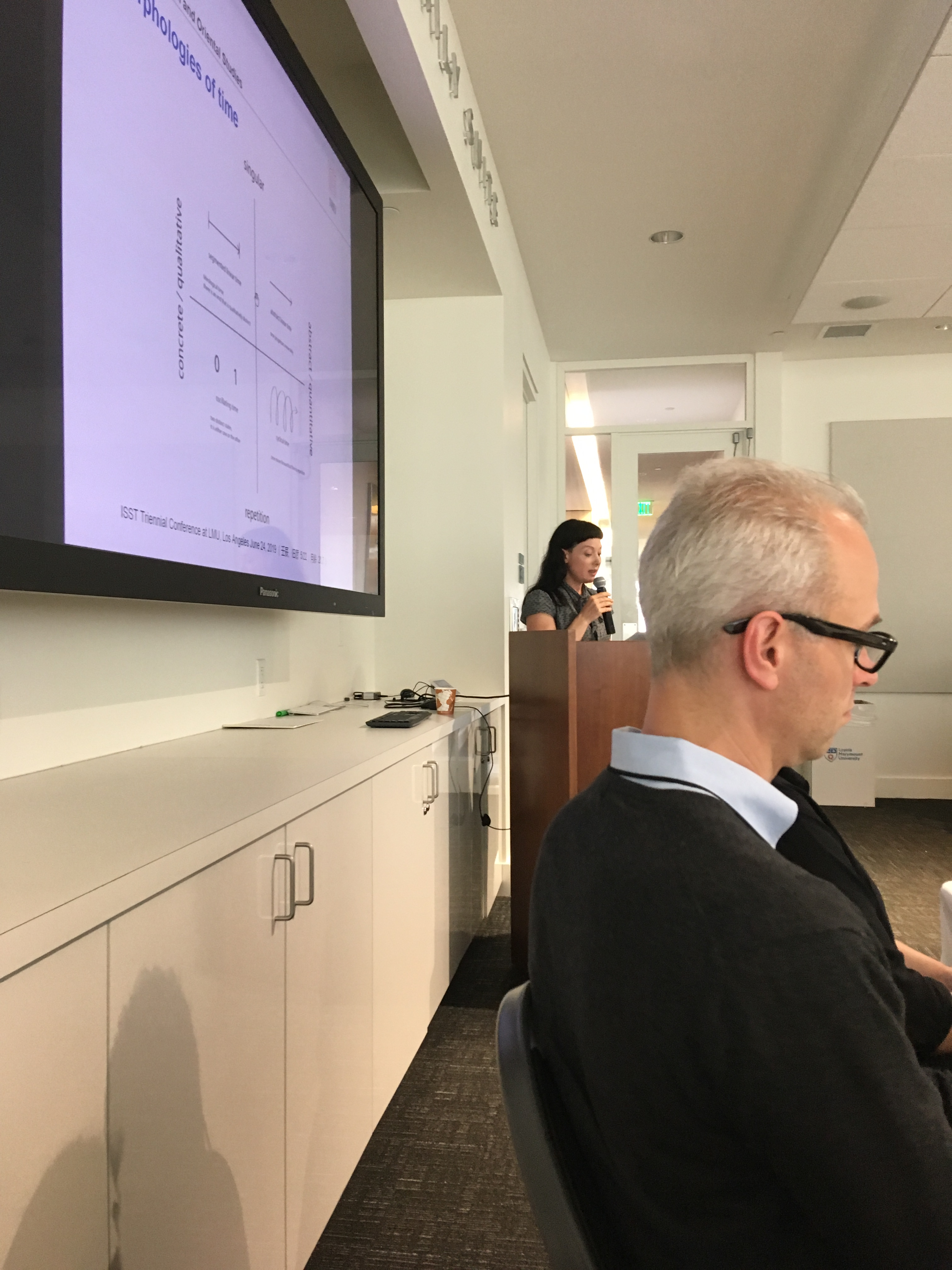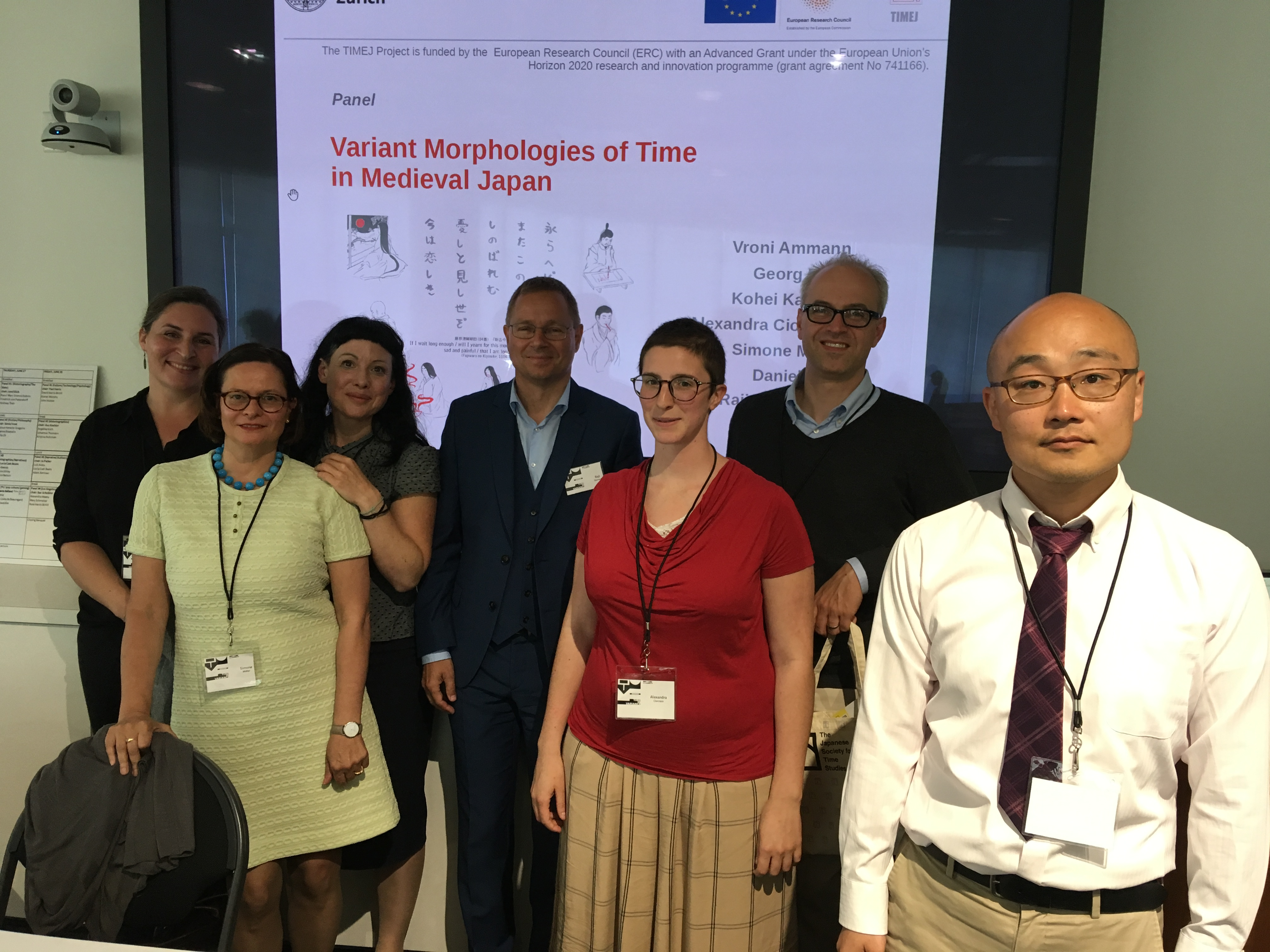17th Triennial Conference of the ISST
International Society of the Study of Time
From June 23–29 2019, the TIMEJ team jointly attended the “Time in Variance” conference of the International Society for the Study of Time, hosted at Loyola Marymount University in Los Angeles, US.
After a welcoming reception on the opening night, the team held their panel “Variant Morphologies of Time in Medieval Japan” on the first day. The presentations of the panels highlighted the many forms temporality takes in different spheres of medieval Japan, while also demonstrating the variety within those specific spheres.
After a brief introduction by Raji Steineck, the panel opened with Vroni Amman’s presentation of incense clocks as time measuring devices. She reflected on how the use of the clocks, the recipes for incense mixtures, and the ingredient trade routes hint towards the coexistence of concepts of linear and circular forms of time. Tying in on the aspect trade, Georg Blind and Kohei Kataoka introduced their quantitative analysis of Kobe harbour shipment data. They presented clear evidence for a linear understanding of time as an economic factor that was subject to control in the shipment of goods, but also argued that the money lending practices on the other hand indicate the implicit presumption of a circular continuation of the trading business.
Simone Müller and Alexandra Ciorciaro presented on gendered temporalities in aristocratic diary literature. They compared two diaries written by men with those written by ladies-in-waiting, highlighting different concerns with varying temporal aspects. They argued that in male duty diaries the chronography is a fundamental principle of organizing the texts, whereas the narrative female are more guided by a concern with the aesthetisation of time. They reflected on the dominant morphologies of time evoked by the texts, tying it to socio-political gender differences but also the proximity to the imperial court.
Finally, Daniela Tan elaborated on the intersection of variant temporalities in the female body, discussing the complexity of the different forms body time takes according to medical, religious and cosmological concerns. She demonstrated how these dimensions are intertwined, as for example in medical texts that tie a regular period to cosmological patterns, and reflected on the socio-political implications of menstruation on women in medieval Japan.
On the 3rd day of conference presentations, Etienne Staehelin presented his research about the transformation of concepts of time in Dōgen and his disciples. Under the aspect of “time in variance” he identified a plurality of coexisting temporal forms within Dōgen’s conception of time in the uji fascicle. He demonstrated how this abundant plurality is lost in the writings of Dōgen’s disciples Sen’e and Kyōgo, and reflected on how that might be related to general trends within Buddhism at the time.
The panel and Etienne Staehelin’s presentation were well-received and led to insightful discussions both inside and outside the confines of the conference room.
This conference marked a historic event in the history of the Society, as for the first time, it hosted a sponsored panel by the Japanese Society for Time Studies (chaired by our own Daniela Tan). This marks the starting point of a hopefully long and prosperous cooperation between the two societies. A report on the conference by the Japanese Society for Time Studies is available in Japanese on their website: http://timestudies.net/?p=1203.





